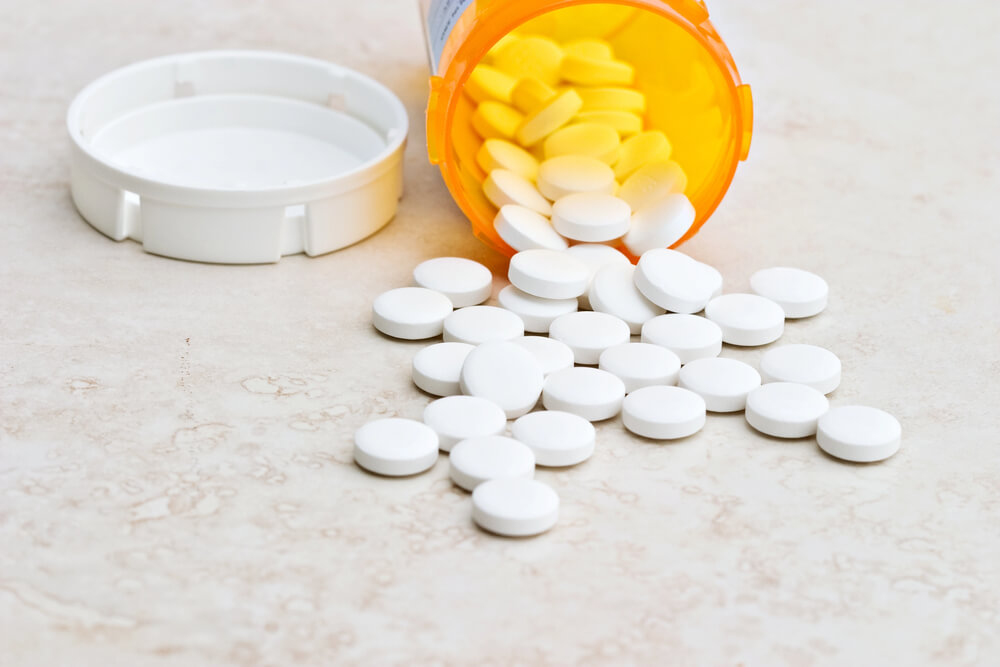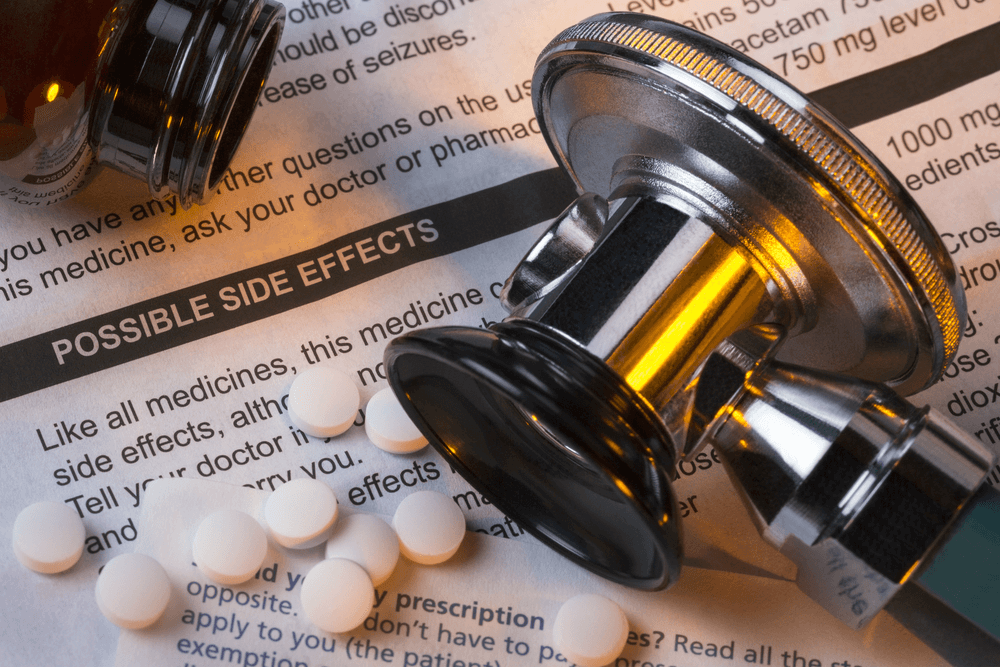When it comes to mental health treatment, very few people respond in a “one-size-fits-all” way. Antidepressants like Prozac are among the most widely prescribed psychiatric medications in the world. Yet, many patients find that while their mood improves, they’re left with lingering fatigue, difficulty concentrating, or a frustrating lack of motivation. On the other hand, modafinil, best known as a prescription “wakefulness-promoting” drug, has gained a reputation as a treatment for excessive sleepiness and as a potential cognitive enhancer.
That overlap is where things get interesting: researchers and clinicians have explored what happens when these two very different medications are used together. And the big question is: Does this combo feel safe? Does it help with motivation or just cause more insomnia? And perhaps most importantly, what do patients themselves report when they try it, whether in clinical trials or on forums like Reddit?
The guide explores how modafinil and Prozac differ, their benefits, risks, withdrawal considerations, and, most importantly, provides an understanding of the pros and cons of this drug pairing so you know what to expect.
What Is Prozac?
Prozac is the brand name for fluoxetine, a classic antidepressant in the selective serotonin reuptake inhibitor (SSRI) class. It works by blocking the serotonin transporter, hence raising levels of serotonin in the brain [4]. By boosting serotonin, fluoxetine can improve mood, reduce anxiety, and relieve obsessive thoughts. Prozac is prescribed for a variety of conditions: it’s FDA-approved for major depressive disorder, obsessive-compulsive disorder (OCD), panic disorder, bulimia nervosa, and premenstrual dysphoric disorder. It’s also used with the antipsychotic olanzapine (as “Symbyax”) to treat depressive episodes in bipolar disorder or treatment-resistant depression.
Fluoxetine is taken once daily (often in the morning) and has an extremely long half-life – about 2–4 days for fluoxetine itself and 7–9 days for its active metabolite norfluoxetine [4]. This means blood levels stay steady and reduce abrupt withdrawal; it also delays the full effect (2–4 weeks to feel improvement).
Prozac tends to be “activating” rather than sedating (some people feel more energetic). Because it’s non-stimulant, it has virtually no abuse risk and is not a controlled substance.
Besides the approved uses, fluoxetine has a broad range of off-label applications. For example, it may help with social anxiety, post-traumatic stress disorder (PTSD), binge eating, and certain personality or eating disorders. Its ability to stabilize mood and reduce compulsions makes it useful in anxiety-related conditions beyond OCD.
Nonetheless, SSRI treatment should be tailored by a doctor, especially in complex cases like bipolar depression or combined psychiatric conditions.
What Is Modafinil?
Modafinil, the active ingredient used to make the brand-name med Provigil and several other generic brands, is a non-amphetamine stimulant approved to treat excessive sleepiness. It promotes wakefulness in conditions like narcolepsy, obstructive sleep apnea (OSA), and shift work sleep disorder (SWSD) [1]. Modafinil is not a typical amphetamine: it has a unique chemical structure and a lower risk of euphoria or abuse [2]. It’s classified as a Schedule IV controlled substance due to its stimulant effects.
Unlike classic stimulants, modafinil’s exact mechanism is complex. It weakly inhibits dopamine reuptake, raising dopamine levels in the brain, and indirectly increases norepinephrine and serotonin as a result. It also appears to stimulate orexin and histamine pathways (important for arousal) [3]. The drug comes in 100 mg or 200 mg tablets, usually taken once daily in the morning for treating OSA or narcolepsy, or an hour before a shift.
Medically, modafinil is FDA-approved for sleep disorders, but it’s also widely used off-label. Doctors sometimes prescribe it for attention-deficit/hyperactivity disorder (ADHD) and as an adjunct in depression. It is also explored for cancer-related fatigue, multiple sclerosis fatigue, and even cocaine dependence (though results are mixed) [2]. In healthy people, modafinil is often discussed as a cognitive enhancer to augment brain function.
Difference Between Modafinil and Prozac
While both modafinil and Prozac are widely used in clinical and off-label settings to influence brain function and behavior, they serve fundamentally different therapeutic roles and operate through distinct neurochemical pathways.
Despite occasional overlap in conditions like depression or fatigue, their mechanisms, regulatory status, and physiological impacts diverge significantly. Understanding these differences is crucial for safe and effective use, particularly when considering off-label applications or potential drug interactions.
Below is a detailed comparison of the two meds across multiple pharmacological and clinical dimensions.
| Parameter | Modafinil | Prozac |
| Drug Class | Central Nervous System (CNS) stimulant / Wakefulness-fostering agent. | Selective Serotonin Reuptake Inhibitor (SSRI). |
| Primary Mechanism | Inhibits dopamine reuptake; increases dopamine, norepinephrine, and histamine. | Inhibits serotonin (5-HT) reuptake; increases synaptic serotonin levels. |
| FDA-Approved Uses | Narcolepsy, OSA, and SWSD. | Major depressive disorder, OCD, panic disorder, bulimia nervosa, PMDD. |
| Common Off-Label Uses | ADHD, depression augmentation, bipolar depression, chronic fatigue syndrome, fatigue, drowsiness.
For healthy individuals, it can be used for cognitive enhancement purposes, among others. |
Social anxiety disorder, PTSD, binge-eating disorder, premenstrual dysphoria. |
| Typical Dosage | 100–200 mg once daily (can be taken morning for OSA/narcolepsy or an hour before shift work). | 20–60 mg once daily (can be taken morning or evening). |
| Half-Life | ~12–15 hours. | 2–4 days (parent drug); active metabolite (norfluoxetine): 7–9 days. |
| Time to Steady State | ~2–3 days [5]. | 2–4 weeks (due to long half-life). |
| Onset of Action | Effects felt within 30-60 minutes (peak effects within 2-4 hours). | Therapeutic effects take 4–6 weeks to manifest. |
| Controlled Substance | Schedule IV (low but present abuse potential). | Not scheduled (no known abuse or dependence risk). |
| Common Side Effects | Headache, insomnia, nervousness, nausea, anxiety, decreased appetite. | Nausea, insomnia, headache, drowsiness or agitation, weight changes, sexual dysfunction. |
| Serious Risks | Rare: Stevens-Johnson syndrome, psychiatric symptoms, hypertension. | Increased suicidal ideation (especially in young adults), serotonin syndrome. |
| Metabolism | Primarily hepatic via CYP3A4. | Hepatic via CYP2D6, CYP2C9, CYP2C19. |
| Enzyme Interaction Profile | CYP3A4 inducer; moderate CYP2C19 inhibitor. | CYP2D6 inhibitor; weak CYP3A4 and CYP2C19 inhibitor. |
| Drug Interaction Risk | May reduce levels of CYP3A4 substrates (e.g., oral contraceptives, some antidepressants). | May increase levels of CYP2D6 substrates (e.g., TCAs, antipsychotics). |
| Use in Depression | Adjunctive only; enhances alertness and motivation in treatment-resistant cases. | First-line monotherapy for major depression and related mood disorders. |
| Effect on Energy/Mood | Promotes alertness, focus, and wakefulness. | Promotes mood stabilization and emotional regulation. |
| Use in Anxiety | Not indicated; may worsen anxiety or cause jitteriness. | First-line for multiple anxiety disorders. |
| Impact on Sleep | Promotes wakefulness; can cause insomnia if taken late. | May cause insomnia or drowsiness, depending on individual response. |
| Pediatric Use | Limited; not approved for children. | Approved for pediatric OCD and depression (ages 8+). |
| Pregnancy Category | C (risk not ruled out). | C (risk in third trimester: neonatal complications). |
| Discontinuation | No significant withdrawal; effects cease within a day. | Gradual taper required; abrupt stop can cause “SSRI discontinuation syndrome”. |
As seen from the comparison table above, despite their stark differences, modafinil and Prozac share some indirect similarities. Both can be used as adjuncts in treatment-resistant depression, albeit through different pathways: modafinil by boosting energy and cognitive drive, and Prozac by correcting serotonin imbalances. They are both generally well-tolerated compared to older psychotropics and have favorable safety profiles when used appropriately.
Interestingly, some patients on Prozac may be prescribed modafinil to counteract SSRI-induced fatigue or sedation, particularly in cases of atypical depression. However, caution is warranted due to potential pharmacokinetic interactions: modafinil may reduce Prozac levels by inducing CYP3A4, while Prozac may increase modafinil levels by inhibiting CYP2C19. Though not absolutely contraindicated, therapeutic drug monitoring or dose adjustments may be necessary in combined use.
Moreover, both drugs require several days to reach full effect, though for different reasons. Modafinil acts quickly, but benefits accumulate with consistent use in chronic conditions, while Prozac’s delayed onset is due to neuroadaptive changes in serotonin signaling.
Can You Take Modafinil & Prozac Together?
Combining modafinil and Prozac is not routine, but it can be done in special cases (usually with close medical oversight). Clinicians sometimes add modafinil when a patient on an SSRI (like Prozac) still feels very fatigued or lacks energy. Small trials suggest that Prozac + modafinil can improve depressive symptoms and alertness more than Prozac alone. For example, in one study, major depression was found to improve faster and with larger symptom improvement when modafinil was added [6]. Findings present modafinil as a well-tolerated and efficacious agent in combination with Prozac in the management of patients with major depression.
In practice, the two drugs affect different neurotransmitters (serotonin vs. dopamine), so they do not directly “cancel out” each other’s effects. Instead, they may work in complementary ways.
That said, this is a sensitive combination. Because each medication has its own side effects and metabolic profile, only a doctor should decide if they can be safely used together. It’s not inherently dangerous to combine them, but it requires monitoring. The key is understanding that mixing a stimulant (modafinil) with an antidepressant (fluoxetine) can amplify certain actions (like alertness) or side effects (like agitation).
The sections below examine safety, potential benefits, and possible downsides of this combo.
Is This Combination Safe?
No major contraindication exists for using modafinil and Prozac together, but caution is strongly advised. Each drug can impact the other through metabolic pathways. Modafinil induces CYP3A4 (and inhibits CYP2C19) [2], while fluoxetine inhibits CYP2D6 (and CYP3A4) [4]. This means modafinil could slightly lower Prozac levels over time (by speeding its breakdown), while Prozac could raise modafinil levels (by slowing its breakdown).
In most cases, this interaction is mild, but it could affect dosing. For instance, a person might need a slightly higher Prozac dose or a slightly lower modafinil dose when they’re on both drugs, but only if directed by a doctor.
Another safety concern is overstimulation. Both meds can raise heart rate and blood pressure a little. Modafinil can especially cause tachycardia and palpitations [1]; Prozac less so, but it can increase anxiety or agitation in some. Together, they may increase the risk of jitteriness, restlessness, or insomnia. Patients with uncontrolled hypertension or severe anxiety should use this combo carefully. It’s wise to avoid other stimulants (caffeine, ADHD meds) and alcohol while on these drugs.
Serotonin syndrome is a rare but serious risk when multiple serotonergic drugs are combined. Modafinil isn’t a typical serotonin releaser, but it does increase serotonin levels indirectly. Fluoxetine increases serotonin directly. In theory, taking them together might slightly raise the risk of serotonin excess.
Indeed, experts recommend caution: one review notes that combining modafinil with antidepressants (especially those cleared by the same liver enzymes) warrants monitoring for toxic effects, including serotonin syndrome [7].
In practice, this is very uncommon; no widespread reports exist of serotonin syndrome from this combo. Still, both patients and doctors should watch for symptoms (high fever, muscle rigidity, confusion) and seek help if they occur.
Overall, the combination can be safe under supervision. One clinical trial of fluoxetine + modafinil reported no difference in side effects compared to fluoxetine alone, suggesting it was well-tolerated [6]. However, that trial was short (6 weeks) and monitored patients closely. Real-world safety depends on individual factors: a doctor will consider medical history (e.g., heart disease, bipolar disorder) and current meds and monitor blood pressure and mood.
For most healthy people, taking both under a doctor’s care isn’t known to be inherently dangerous, but it’s not something to try without medical advice.
Positive Effects of Drug Mixing
When used together under the right circumstances, modafinil and Prozac can offer complementary benefits. The most-cited advantage is a boost in energy and focus for someone whose depression causes fatigue. Prozac alone may lift mood over time, but it often takes weeks to take effect.
Modafinil’s stimulant properties can provide more immediate wakefulness. In patients with depression, studies show this can translate to feeling better faster. For example, adding modafinil to Prozac significantly improved depression scores compared to Prozac alone [6].
Another benefit is faster response. Because Prozac alone can take weeks to show effects, adding modafinil may hasten recovery.
Finally, the combination doesn’t necessarily add many new side effects when done properly. The previously cited RCT found comparable adverse effects between the Prozac-only and Prozac+modafinil groups [6]. This implies that at therapeutic doses, modafinil did not significantly worsen Prozac’s side-effect profile. Indeed, modafinil may counteract some negative effects of antidepressants: for example, Prozac can cause fatigue in some, but modafinil fights fatigue.
Overall, used judiciously, the combo can offer a meaningful improvement in quality of life – lifting mood while sharpening alertness.
Possible Side Effects
Combining modafinil and Prozac may lead to additive side effects, primarily due to their activating properties. Common central nervous system effects include insomnia, anxiety, nervousness, and irritability, as both drugs can disrupt sleep – modafinil through stimulation, and Prozac via agitation or vivid dreams.
Prozac can induce headaches, dizziness, and lightheadedness, especially during early treatment, while gastrointestinal issues like nausea, diarrhea, and stomach upset may occur due to the combined impact on the digestive system [4]. Taking medications with food and maintaining hydration can help reduce these effects.
Cardiovascular concerns include elevated heart rate and blood pressure from modafinil, with Prozac potentially contributing to palpitations, warranting monitoring in those with heart conditions.
Mood changes are a key risk, as the combination may trigger hypomania or mania in susceptible individuals, particularly those with bipolar disorder. Symptoms like racing thoughts, impulsivity, or extreme restlessness should be promptly addressed. Though rare, serotonin syndrome is a serious theoretical risk, presenting with confusion, high fever, rapid heart rate, and muscle rigidity—especially during dose changes.
Other possible reactions include skin rashes from modafinil and hyponatremia or sexual dysfunction (e.g., low libido, impotence) from Prozac. Most side effects are mild and temporary, but any severe or new neurological, cardiac, or psychiatric symptoms require immediate medical evaluation. This list is not exhaustive; always consult your medical specialist before using any of the medications.
Withdrawal Period
If someone stops taking modafinil and Prozac after using them together, their withdrawal experiences will differ for each medication:
- Modafinil: Modafinil isn’t considered physically addictive. Studies indicate that stopping modafinil causes little to no formal withdrawal syndrome [2]. In one controlled trial, participants on modafinil for 9 weeks showed no significant withdrawal symptoms after stopping, aside from the return of their original sleepiness. In other words, people don’t typically have nasty crash-like symptoms from modafinil; they simply feel tired again, like before treatment.Some users report feeling more lethargic or irritable for a day or two after missing a dose, but this is the body reverting to its baseline. In practice, doctors may still taper modafinil if it has been used daily for a long time, but dramatic rebound or withdrawal is uncommon;
- Prozac: Prozac has an especially long half-life, which usually means milder discontinuation effects compared to other SSRIs. However, stopping Prozac may cause withdrawal symptoms like brain zaps, dizziness, mood swings, irritability, anxiety, headaches, confusion, insomnia, and suicidal thoughts. Due to its long half-life, withdrawal is less common and usually milder than with other antidepressants, though symptoms may last longer [8].
To reduce risks, always consult a doctor before stopping. A gradual taper is often recommended to minimize symptoms. Supportive self-care, such as regular exercise, consistent sleep, and a balanced diet, can also help manage withdrawal effects. Never discontinue Prozac abruptly without medical guidance.
When stopping both medications, one might simply notice that mood and energy levels return to pre-treatment levels. The alertness from modafinil will fade within a day after the last dose. Prozac’s effects linger longer, so its absence may not be felt immediately.
Still, any change in regimen should be planned with a physician. Patients often transition off modafinil first (since it clears faster) and continue Prozac for a while, or vice versa, depending on which symptom (fatigue vs mood) is the priority.
The Verdict: Modafinil and Prozac Combo
The combination of modafinil and Prozac can be effective for depression with prominent fatigue or cognitive sluggishness, offering faster relief and improved alertness where Prozac alone may fall short. They work on different systems – modafinil on dopamine and arousal, Prozac on serotonin and mood – allowing complementary effects without direct pharmacological conflict.
The combo is generally well-tolerated and can enhance treatment response in resistant cases. However, it’s not for self-medication and requires medical supervision. Potential issues include increased stimulation, insomnia, or rare drug interactions due to metabolic effects (CYP450). Doctors typically start with Prozac and add low-dose modafinil only if needed.
Regular monitoring of mood, heart rate, and sleep is essential. While not a standard regimen, this combination can be a valuable tool for select patients under professional care. Never combine these drugs without guidance. When used responsibly, they may improve both energy and emotional well-being in challenging cases of depression.
References
- Modafinil. Retrieved: August 28, 2025. Drugs.com.
- Modafinil. By Karl Greenblatt and Ninos Adams. Retrieved: August 28, 2025. Ncbi.nlm.nih.gov.
- Mechanisms of modafinil: A review of current research. By Paul Gerrard and Robert Malcolm. Published: June 2007. Pmc.ncbi.nlm.nih.gov.
- Fluoxetine. By Ahsan J. Sohel, Mollie C. Shutter, Preeti Patel, and Mohammed Molla. Retrieved: August 28, 2025. Ncbi.nlm.nih.gov.
- Clinical pharmacokinetic profile of modafinil. By Philmore Robertson Jr and Edward T Hellriegel. Published: 2003. Pubmed.ncbi.nlm.nih.gov.
- Double-blind randomized parallel-group clinical trial of efficacy of the combination fluoxetine plus modafinil versus fluoxetine plus placebo in the treatment of major depression. By Roya Abolfazli, Mahdi Hosseini, et al. Published: April 2011. Pubmed.ncbi.nlm.nih.gov.
- Evaluation of modafinil as a perpetrator of metabolic drug–drug interactions using a model informed cocktail reaction phenotyping trial protocol. By Angela Rowland, Madelé van Dyk, David Warncken, Arduino A. Mangoni, Michael J. Sorich, and Andrew Rowland. Published: January 2018. Pmc.ncbi.nlm.nih.gov.
- What to know about Prozac withdrawal symptoms. By Jennifer Huizen. Medically reviewed by Nicole Washington. Retrieved: August 28, 2025. Medicalnewstoday.com.









